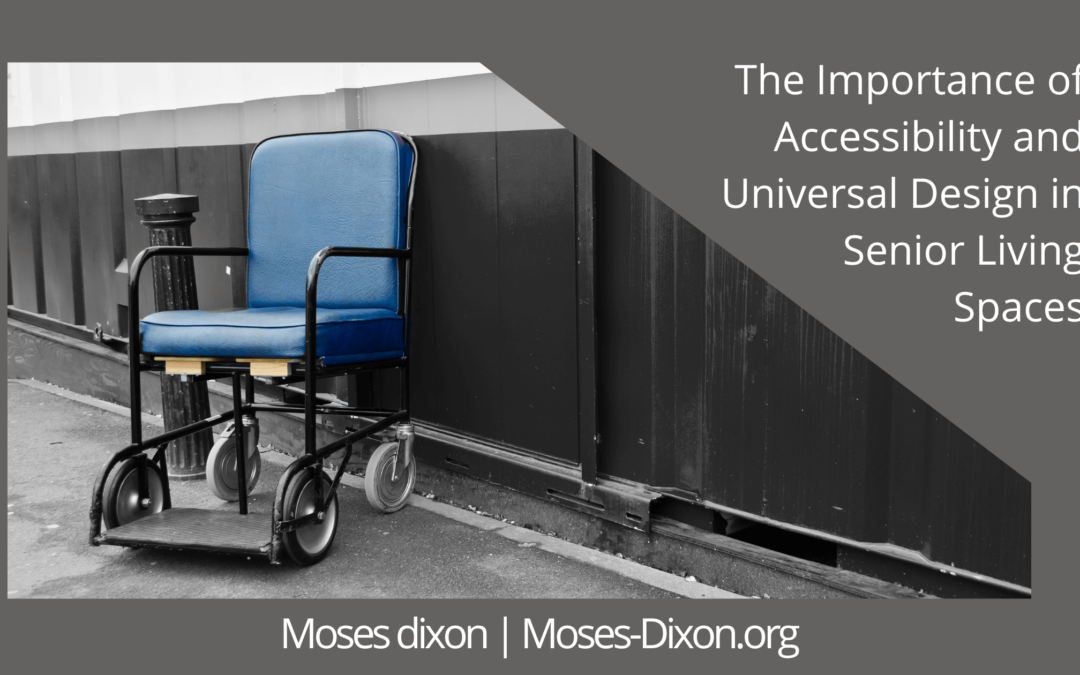As the population ages, ensuring accessible and inclusive living spaces for seniors becomes increasingly crucial. Accessibility and universal design principles play a vital role in creating environments that support the needs and independence of older adults.
Enabling Independence and Mobility
Accessible design features in senior living spaces, such as ramps, grab bars, wide doorways, and level thresholds, facilitate independent mobility for older adults with mobility challenges. These features make it easier for seniors to navigate their living spaces, reducing the risk of falls and accidents. Accessible design ensures that seniors can move freely and safely, maintaining their sense of independence and reducing the need for assistance.
Enhancing Safety and Fall Prevention
Falls are a significant concern for older adults, leading to injuries, loss of confidence, and decreased mobility. By incorporating universal design principles, such as slip-resistant flooring, well-placed lighting, and grab bars in bathrooms, senior living spaces can significantly reduce the risk of falls and enhance safety. Additionally, eliminating tripping hazards, providing ample space for maneuverability, and using contrasting colors for visual clarity contribute to creating a secure living environment for seniors.
Promoting Social Inclusion
Accessible and universal design principles also promote social inclusion within senior living communities. Common spaces, such as community rooms, dining areas, and outdoor recreational areas, should be designed with accessibility in mind. This allows seniors with different abilities and mobility levels to engage in social activities, participate in community events, and interact with fellow residents. When spaces are inclusive and accessible, seniors feel a sense of belonging, fostering a vibrant and supportive community.
Facilitating Aging in Place
The desire to age in place, or remain in one’s own home or community, is prevalent among seniors. By incorporating accessibility and universal design principles into senior living spaces, communities can support this goal. Features like wheelchair-accessible entrances, adaptable bathroom layouts, and adjustable countertops accommodate changing needs as seniors age. Aging in place allows individuals to maintain their independence, retain familiar surroundings, and have a higher quality of life.
Improving Mental Well-being
Accessible and inclusive living spaces have a positive impact on the mental well-being of seniors. When seniors can move around their living spaces with ease, engage in activities independently, and have control over their environment, it enhances their sense of self-worth and autonomy. Accessible design features also alleviate stress and frustration that can arise from navigating inaccessible spaces, promoting a sense of comfort and peace of mind.
Valuing Diversity and Respect
Creating senior living spaces with accessibility and universal design principles reflects society’s commitment to valuing diversity and respecting the rights and needs of all individuals. It sends a message that seniors of all abilities are valued members of the community and deserve equal access to amenities and services. By integrating accessibility into the design process, architects, builders, and developers contribute to a more inclusive society that values the well-being and dignity of seniors.
The importance of accessibility and universal design in senior living spaces cannot be overstated. By incorporating these principles, we create environments that enable independence, enhance safety, promote social inclusion, facilitate aging in place, and improve the mental well-being of seniors. It is essential for architects, designers, policymakers, and senior living communities to prioritize accessibility and universal design, ensuring that seniors can age with dignity, maintain their independence, and enjoy a high quality of life in their later years. By doing so, we honor the contributions and value the well-being of our aging population.
